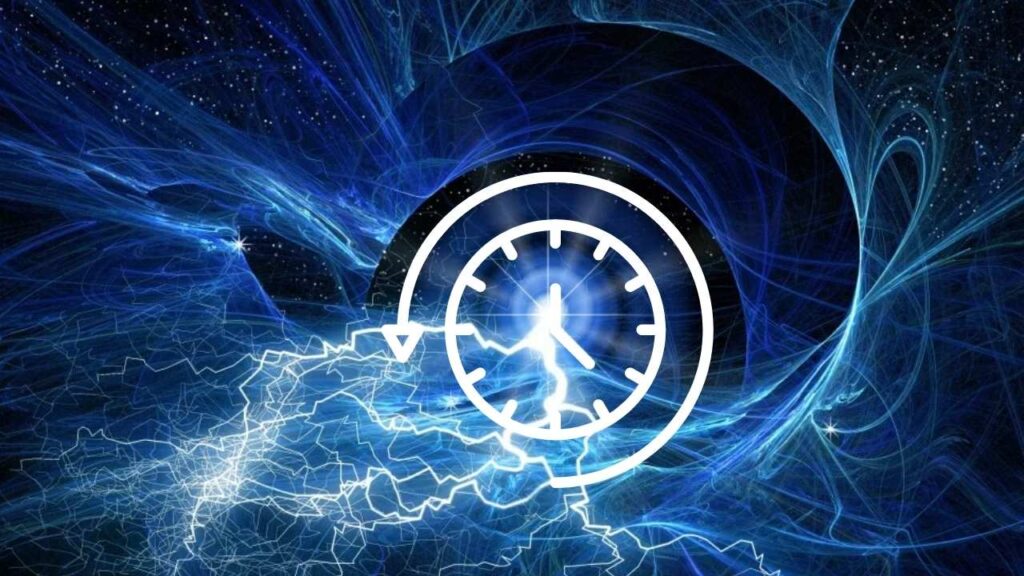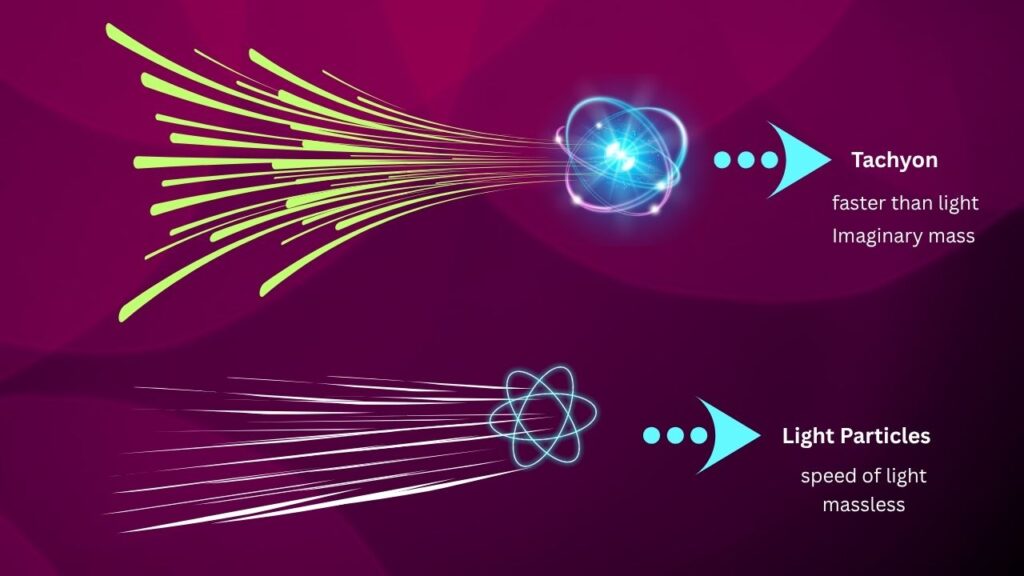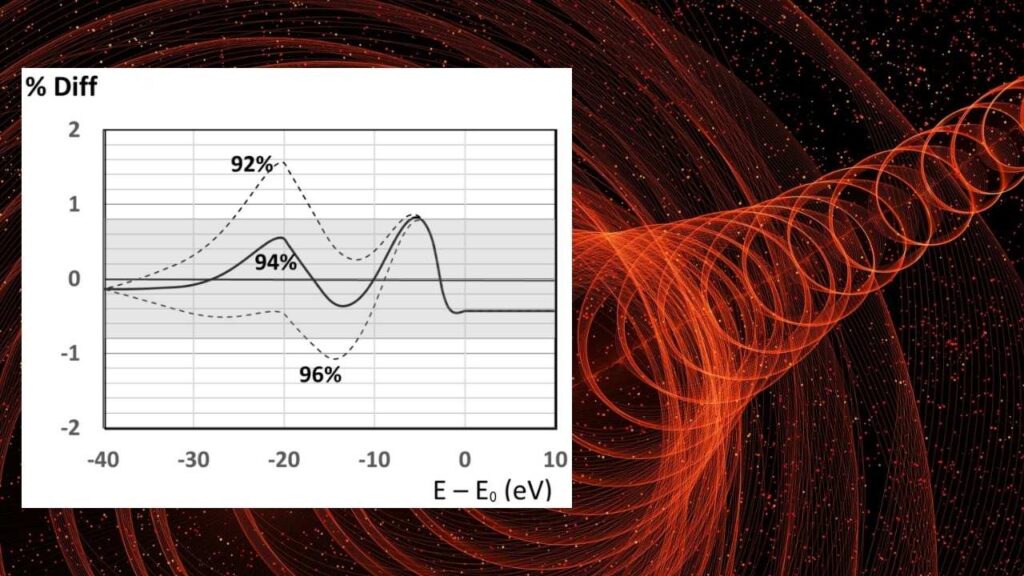New Tachyon Research: Imagine a world where time isn’t just a one-way street from past to future, but a river with currents flowing in both directions. That’s the kind of future scientists are exploring thanks to new research into tachyons—hypothetical particles that move faster than light. This isn’t just science fiction: recent studies have developed mathematical frameworks that make tachyons a serious subject for physicists, opening the door to mind-bending possibilities like time travel and a whole new understanding of reality.

For decades, tachyons were seen as a quirky idea, a puzzle piece that didn’t quite fit into the picture of our universe. But now, teams led by researchers such as the Dragan group and Artur Ekert have crafted models that resolve old contradictions, making tachyons not just possible, but plausible within Einstein’s theory of relativity. This breakthrough could redefine how we think about time, causality, and even the way the universe works at its most fundamental level.
New Tachyon Research
| Topic | Key Data/Stat | Professional Insight |
|---|---|---|
| Tachyon Definition | Hypothetical particle traveling faster than light | Only recently made mathematically plausible within relativity; not yet observed |
| Time Travel Possibility | New models allow tachyons to theoretically travel through time | Could challenge causality and allow effects to precede causes |
| Quantum Theory Impact | Could reshape quantum theory and our view of time symmetry | May reveal hidden aspects of time and reality, like symmetry-breaking events |
| Practical Applications | Tachyonized materials used in wellness, but mainstream science remains cautious | David Wagner’s Tachyonized™ materials in use in 143 countries; scientific validation still pending |
| Scientific Breakthroughs | September 2024: Three main theoretical barriers to tachyon fields eliminated | Published in Physical Review D; new quantum field models make tachyons probable, not impossible |
| Future Research Directions | Need for advanced timekeeping and cosmic ray studies to detect tachyons | Dr. Zuhair Ahmed’s Tachyon Slipstream Theory suggests new methods for detection and validation |
The world of physics is on the brink of something extraordinary. New research into tachyons is challenging our understanding of time, causality, and reality itself. While tachyons are still just a theory, the latest breakthroughs mean that scientists can now explore these ideas with fresh eyes and new tools.
Whether you’re a student, a professional, or just someone who loves to wonder about the universe, this is an exciting time to be curious. The journey to understand tachyons—and what they might mean for our future—is just beginning.
What Are Tachyons? A Simple Explanation
Tachyons are particles that, if they exist, always travel faster than light. They’re not like the particles we know—such as electrons or protons—that can’t break the light-speed barrier. Instead, tachyons would start out faster than light and, if they lost energy, would speed up even more!

Scientists first dreamed up tachyons in the 1960s as a way to explore what might happen if something could go faster than light. For a long time, most physicists thought tachyons were impossible because they seemed to break the rules of Einstein’s relativity, which says nothing can go faster than light. But new research is changing that.
How New Research Is Changing the Game
Recent studies have tackled the big problems that made tachyons seem impossible. One major hurdle was that, according to old models, tachyons would need infinite energy to slow down, which doesn’t make sense. Another was that they could create paradoxes, like sending information back in time and changing the past.
But in 2024, a team of physicists published a paper in Physical Review D that rewrote the rules. They changed the math of quantum field theory—the foundation of modern physics—to make room for tachyons. Now, tachyons can exist without breaking the laws of physics, at least in theory.

This is a huge deal. It means that scientists can now seriously study tachyons and what they might mean for our understanding of the universe.
Time Travel and the Nature of Reality
If tachyons exist, they could carry information backward in time. This would mean that an effect could happen before its cause—something that goes against everything we know about how time works.
For example, imagine you could send a message to your past self. That message could change what you do, which might mean you never sent the message in the first place. This is called the grandfather paradox, and it’s a big reason why time travel has always seemed impossible.
But the new tachyon models suggest that the universe might have ways to avoid these paradoxes. Some scientists think that if time travel were possible, the universe would adjust itself so that paradoxes don’t happen. Others believe that multiple timelines or parallel universes could exist, so every possible outcome happens somewhere.
Practical Advice: What Does This Mean for Us?
Right now, tachyons are still just a theory. No one has ever seen or detected a tachyon, and there’s no proof that they exist outside of mathematical models. But the new research means that scientists can now look for them in new ways.
If you’re a student or a curious person, this is a great time to learn about physics and quantum mechanics. The field is changing fast, and new discoveries could come at any time. For professionals, this means keeping an eye on the latest research and being open to new ideas that challenge old assumptions.
Examples and Analogies
Let’s make this easier to picture. Imagine time is like a movie. Normally, the movie plays from start to finish, and you can’t go back to change what already happened. But if tachyons exist, it’s like having a remote control that lets you rewind or fast-forward the movie—or even change the script!
Another way to think about it is like a river. Normally, the water flows in one direction. But if tachyons exist, it’s like having currents that can flow upstream as well as downstream.
How Scientists Are Trying to Find Tachyons
Scientists are looking for tachyons in several ways:
- High-energy cosmic rays: These are particles from space that hit Earth’s atmosphere. If tachyons exist, they might leave a special kind of trace that scientists can detect.
- Advanced timekeeping: By measuring time very precisely, scientists might spot tiny changes that could be caused by tachyons.
- Quantum experiments: New experiments in quantum physics could reveal strange behaviors that only tachyons can explain.
The Tachyon Slipstream Effect
Some researchers have proposed something called the Tachyon Slipstream Effect. The idea is that if there are lots of tachyons in a certain place, they could create an “invisible current” that speeds up or slows down time in that area.
This is still just a theory, but it’s an exciting idea. If it’s true, it could explain why time seems to go faster as we get older—because we’re moving through a tachyon slipstream!
Tachyonized Materials and Wellness
Some people claim to have created materials that can “catch” tachyon energy. These Tachyonized™ materials are used in over 143 countries for things like healing and wellness.
Scientists are still skeptical about these claims, but the new research means that the idea of tachyon energy isn’t as far-fetched as it once seemed. Still, it’s important to remember that mainstream science hasn’t proven that tachyonized materials work as advertised.
Step-by-Step Guide: Understanding Tachyons and Time Travel
- Learn the Basics: Start by understanding what tachyons are—hypothetical particles that travel faster than light.
- Explore the Math: Read about how new research has changed the equations to make tachyons possible.
- Think About Time: Consider how tachyons could allow information to travel backward in time, challenging our ideas of cause and effect.
- Look for Evidence: Follow the latest experiments and studies trying to detect tachyons in the real world.
- Stay Curious: Keep up with new discoveries and be open to ideas that challenge what we know.
Is the Universe a Giant Computer? New Research Offers Clues About Quantum Gravity
New Quantum State Discovery Set to Revolutionize Material Science Worldwide
QuantumDiamonds Launches Diamond-Based Microscopy Tool for Semiconductor Failure Analysis
FAQs About New Tachyon Research
Q: Are tachyons real?
A: Tachyons are still just a theory. No one has ever detected one, but new research makes them much more plausible.
Q: Could tachyons really allow time travel?
A: In theory, yes. If tachyons exist and can carry information backward in time, they could make time travel possible.
Q: What is the grandfather paradox?
A: It’s a thought experiment where someone travels back in time and does something that prevents their own existence, creating a logical contradiction.
Q: Are tachyonized materials scientifically proven?
A: Mainstream science hasn’t proven that tachyonized materials work as claimed, but the idea is becoming less far-fetched thanks to new research.
Q: How can I learn more about tachyons?
A: Follow the latest research in physics journals, read articles from reputable science news sites, and explore online resources from universities and research institutions.






